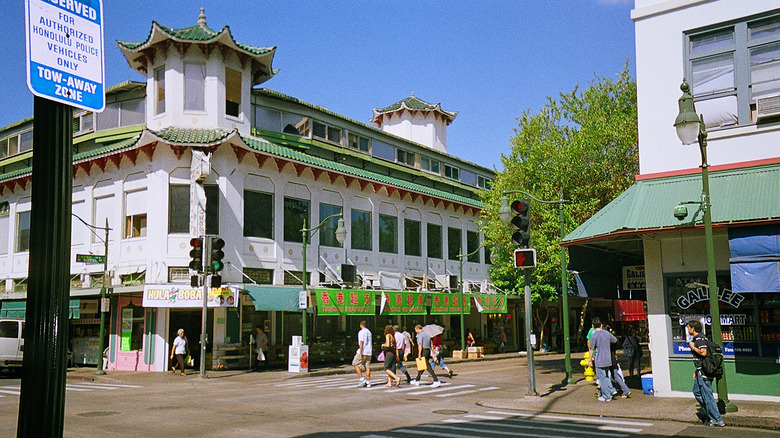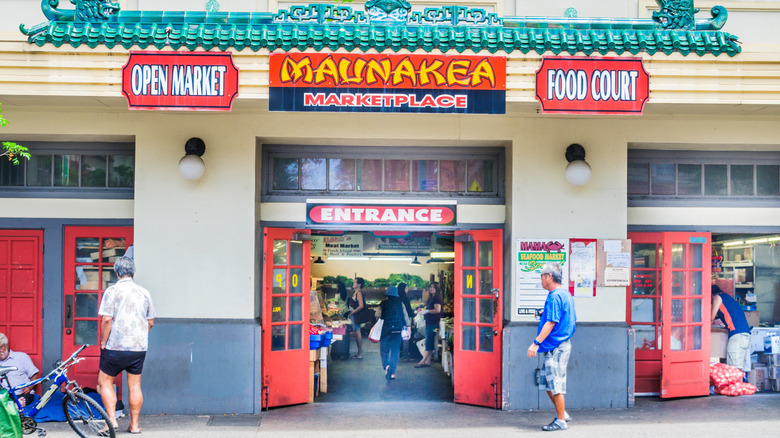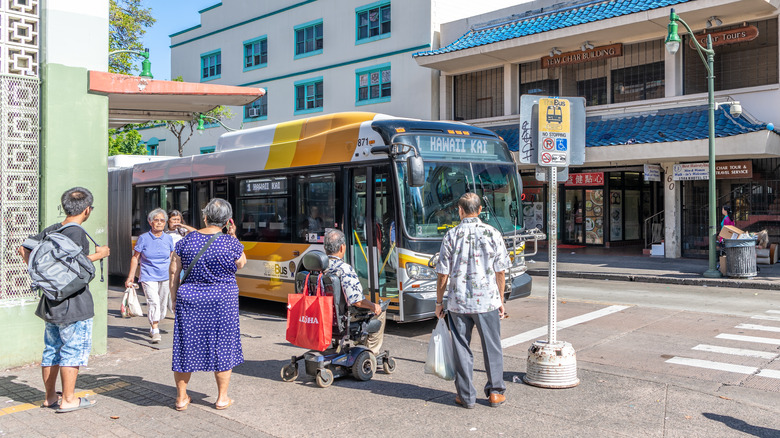The Unexpected Tropical Destination Where You'll Find One Of America's Best Chinatowns
Hawaii is famous for luxury beach vacations where you spend time swimming and snorkeling around the big island or enjoying outdoor adventures like hiking in Hawaii's underrated Iao Valley State Park or up to Lake Waiau, one of the highest and remote lakes in the United States. However, what you may not know about Hawaii is that its capital city of Honolulu is home to a beautiful and historic Chinatown. Hawaii is one of the most diverse states in the U.S. and its thriving Chinatown – one of the oldest in America — showcases its blend of cultures.
First established in the 1840s and '50s,when immigrants from China were recruited to work on sugar plantations, Honolulu's Chinatown quickly became a thriving community. After suffering a major fire in 1900 that destroyed many of the original buildings in the neighborhood, the Chinatown was forced to start from scratch and rebuild. Although the neighborhood was founded by Chinese immigrants, it also became a refuge and safe haven for immigrants from other countries and, today, is home to several other communities including Laotian, Vietnamese, Thai, Korean, Micronesian, Filipino, Portuguese, and Native Hawaiian. Although the neighborhood was considered a rough area by locals in the 1980s and '90s, it has since been revitalized and has become a thriving area once more full of interesting food, art, and culture.
What to do and see in Honolulu's Chinatown
The biggest draw for travelers who want to visit Chinatown in Honolulu is the shopping, architecture, and the food. Although most of the buildings from the original Chinatown constructed in the 19th century didn't survive the fire, a few did, including the Royal Saloon Building, the T. R. Foster Building, the Perry Block Building, and the Iron Block Building. Although built after the fire in 1938, the Wo Fat Restaurant Building is definitely worth checking out as well. While in the area, also make sure to explore the art district and stop by the Shanghai Alley Mural and the Chinese Cultural Plaza, which is full of art galleries and cafes.
While there are small shops all over Chinatown — including tourist shops, lei shops, bakeries, and bookstores — if you want to check out a traditional Asian market head over to the Oahu Marketplace or Kekaulike Marketplace. If you are looking for street food and food stalls as well as produce, head over to the Maunakea Marketplace for some delicious snacks.
And, of course, the most important part of visiting a Chinatown is finding an amazing place to eat. Honolulu's Chinatown has plenty of options from traditional dim sum (check out Mei Sum Dim Sum, which has long been a beloved staple of the neighborhood) to modern Asian fusion (try Pig and the Lady, a well-rated Vietnamese and Asian fusion restaurant that serves amazing dishes like a take on the Vietnamese banh mi sandwich which is made with French bread and comes with pho broth for dipping).
How to get to Chinatown in Honolulu
The best thing about getting to Chinatown in Honolulu is that it is located directly downtown right next to the city's financial district meaning that it is well-connected and pretty easy to reach. You can travel to Chinatown by taking the Waikiki Trolly Red Line which runs every 50 to 60 minutes and also stops at the Honolulu Museum of Art and the Hawaii State Capitol. It is also possible to travel to Chinatown via multiple public bus routes on Oahu Island. If you have rented a car, then you can also easily drive into Chinatown. There is parking available all around Chinatown, although most lots charge fees for parking ranging anywhere from $1.50 to $6 per hour to flat rates of $10 per day.
Also, it is important to note that while the area has been revitalized and is currently a thriving and fun neighborhood, it is still important to be careful of your belongings while visiting Chinatown in Honolulu. Reviews on TripAdvisor also mention that the area is not particularly clean and it can be a bit sketchy but that there are often plenty of local police out and about. If you go with that in mind, then it is definitely possible to have a great time exploring and enjoying this historic neighborhood that is and was an important part of the history of Hawaii.


